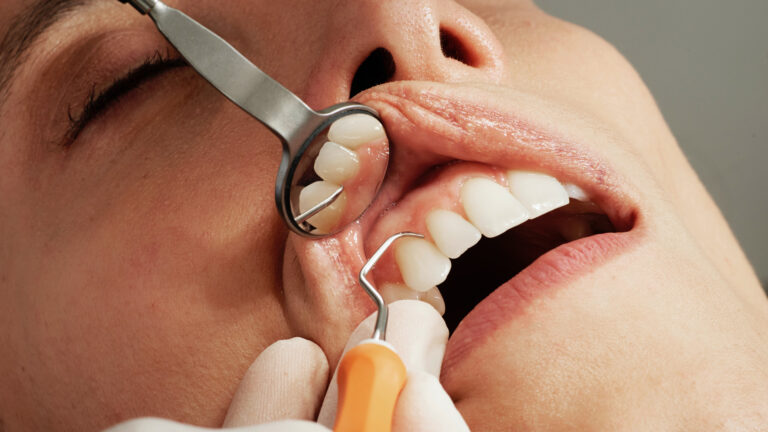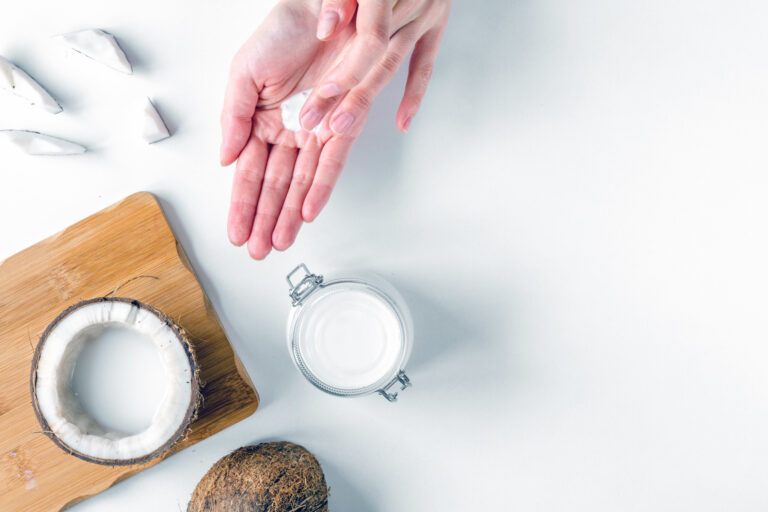As you are about to read this article about breathwork, first take a moment to notice your breath and how you are breathing. It might help to place one hand on your chest and the other on your belly right below your rib cage. As you breathe in and out, do you notice that your lower ribs are expanding, and your belly is rising? Or do your shoulders rise as only your chest is filling with air? Are you breathing in and out through your mouth or your nose? Is your inhale longer or shorter than your exhale? Do you hold your breath between inhalations and exhalations?
The Benefits of Breathwork
The concept of controlled or conscious breathing is nothing new, even though it has become a hot topic in the modern world of wellness and, more notably, within the practice of yoga and meditation. Breathwork goes behind yoga and meditation, though, and is far from being just a new-age trend. Conscious breathing exercises have been linked to an alleviation of pain, stress, depression, anxiety, trauma, addiction, and anger. Controlled breathing also can boost the immune system, cardiovascular health, self-awareness, creativity, productivity, energy, and happiness.

The beauty of breathwork is that there are dozens of different practices for all different types of people and personal goals. There is no one-size-fits-all method, and the benefits are vastly personal and potentially life-changing. Whether you are seeking relief from stress, spiritual enlightenment, or want to improve your physical performance in a sport, among many other goals, there is at the very least one corresponding breathwork practice for you, but more likely many.
What Does it Mean to Breathe Incorrectly?
By the time you turned four or five years old, it is very likely that you had already developed your bad breathing habits. It is probably easier to illustrate what correct breathing is, and then, based on that, you can assess whether you are breathing incorrectly or not. The best illustration of proper breathing is actually the way infants breathe. When a newborn breathes, he or she pulls air all the way down into his or her belly through the nose. The chest, diaphragm, rib cage, and belly expand and then deflate slowly and fluidly as air leaves the body through the nose.
Most of us only breathe into our chest cavity, which is called shallow breathing. Our bodies naturally register shallow breathing as a reaction to stress; so, by breathing only as far down as your chest, you are basically telling your body you are in a continuous state of stress. Long-term shallow breathing has been linked to chronic fatigue, anxiety disorders, cardiovascular issues, headaches, and even pain in the neck, shoulders, and back.
Other common ways you might be breathing incorrectly include breathing through your mouth instead of your nose, holding your breath between inhales and exhales, and over-breathing, which is precisely what it sounds like.
Breaking your habit of breathing incorrectly can be accomplished in part by adopting a breathwork practice. More so, you can choose a breathwork practice that has added benefits such as relieving anxiety, prompting deeper sleep, eliminating stress, clearing the mind, inspiring enlightenment, or helping you to achieve optimal physical performance.
For the best results, it is essential to identify your particular breathing shortcomings and personal goals or needs for incorporating a breathwork practice into your daily life.
Six Breathwork Practices to Get You Breathing
As was mentioned previously, there are dozens of breathwork practices, and determining the best one for you might involve testing a few of them out. The good news is they are all beneficial, and there is no harm in trying different ones until you find the perfect one for you.
It is important to remember that we each have different needs; an athlete looking to improve his or her performance through breathwork will find one technique to work while someone seeking mental clarity and relief from anxiety will find another one more effective.
Here are six breathwork practices to get you started on your journey to better breathing.
1. Nadi Shodhana
Nadi Shodhana, also known as alternate nostril breathing, is a pranayama breathing technique that is used to quiet the mind, alleviate stress, and promote sleep. It is often used at the beginning of a yoga practice or before meditation. The direct translation of Nadi Shodhana is “clearing the channels of circulation.” This breathwork practice also helps to restore the balance between the left and right hemispheres of the brain, support lung and respiratory functions, and revitalize the nervous system.
This simple practice can be done anywhere, anytime, and by anyone.
2. Buteyko Breathing Method
Back in the 1950’s Russian medical scientist Dr. Konstantin Buteyko realized that chronic low-grade hyperventilation or chronic over-breathing ultimately causes oxygen starvation in the body’s tissues. He developed a method of breathwork to help people re-normalize their breathing and, in turn, keep the body properly oxygenated. Basically, the technique involves breathing lightly and through your nose.
The Buteyko Breathing Method promotes the activation of the parasympathetic nervous system and can help reduce blood pressure, alleviate stress, and support a stronger immune system.
To apply the Buteyko Breathing Method simply:
• Sit upright and take a normal breath through your nose. Focus on breathing down into your belly so that it expands.
• Exhale through your nose. Focus on pushing all of the air out of your lungs. Your belly should contract.
• Take a shallower and lighter (1-2 second) breath through your nose and stop.
• Release this short breath through your nose slowly (over 5 seconds or so). Focus on pushing out all air from your body.
• Then hold your breath for 5 seconds.
• Repeat these steps several times.
Over time, this technique will help you re-normalize your breath and reverse your tendency to over-breathe.
3. Box Breathing
Box breathing, also called four-square breathing, is a breathing technique that has been proven to promote concentration, as well as act as a powerful stress reliever. “Box breathing involves taking slow, deep breaths to allow carbon dioxide to build up in the blood. An increase of blood carbon dioxide enhances the cardio-inhibitory response of the vagus nerve when you exhale and stimulates your parasympathetic system. This produces a calm and relaxed feeling in the mind and body,” according to the Mayo Clinic.
If you suffer from any anxiety disorders, depression, insomnia, post-traumatic stress disorder, chronic pain, lung disease, or respiratory issues, box breathing is an easy and ideal breathwork practice worth giving a shot.
This breathing technique is also an effective way to help bring your breath back to its normal and optimal rhythm, as well as refocus and clear your mind.
4. 4-7-8 Technique
The 4-7-8 technique is also referred to as “the relaxing breath” and is believed to help you do just that. This is an excellent breathing tool to use before you go to sleep, during anxiety episodes, or in a moment where you are feeling particularly stressed or frazzled. While Dr. Andrew Weil is credited with developing this breathing technique, it is rooted in the ancient yogic technique called pranayama.
This rhythmic conscious breathing is done by merely breathing in for four seconds through your nose, holding the breath for seven seconds, and then breathing out for eight seconds through your mouth. It is advised that you repeat this cycle at least four times.
5. Breathe-Up Technique
The breathe-up technique is the breathing method that is utilized in freediving. This diaphragmatic-focused breathing technique is aimed at lowering your heart rate and preparing your body to enter a state of prolonged relaxation. As you can probably imagine, diving to extreme depths and remaining underwater for minutes at a time requires a calm state of mind and a heart rate conducive to conserving oxygen.
As with any breathing technique, though, anyone can learn how to breathe-up, and it can be used outside of freediving and as part of your everyday breathwork practice.
However, it is an effective method for reducing stress and anxiety symptoms, enhancing energy levels, improving mood, and promoting more restful sleep.
To practice the breathe-up technique on land:
- Lay down, sit in a comfortable position, or stand up straight.
- Place one hand on your belly and the other one on your chest.
- Take a deep breath and let the air fill your belly until it is puffed out.
- Hold that breath for two counts.
- Exhale slowly for ten counts.
- Repeat this cycle for five to ten minutes.
If you are new to breathwork, it might feel awkward or even impossible to fill up your belly with air. Since most of us are shallow breathers, this will likely feel unnatural at first. But, over time, you will be able to fill your belly and chest with air from these big breaths. You’ll know you are doing it correctly when you have a little Buddha belly!
6. Wim Hof Method
Wim Hof, also known as the Iceman, received his nickname after he climbed Mount Kilimanjaro in his shorts, ran a half marathon above the Arctic Circle on his bare feet, and stood in a container of ice for 112 minutes, among other phenomenal feats. He credits his ability to withstand extreme temperatures and conditions to his dedicated breathwork and cold therapy practice.
The Wim Hof Method combines various breathing techniques and cold therapy to help harness our inner power, which involves adapting to extreme conditions and thriving in our natural environments. Dedication to both the cold therapy and breathwork is believed to elevate energy, improve sports performance, increase willpower, enhance focus and determination, reduce stress levels, inspire creativity, strengthen the immune system, and promote faster recovery.
We have become alienated from nature, but the cold is capable of bringing us back to what we once had lost.”
– Wim Hof
This method has received a lot of attention, and like all breathwork practices, the benefits are entirely personal and dependent on the dedication to the practice. However, the Wim Hof Method has been known to relieve symptoms of several autoimmune diseases, asthma, multiple sclerosis, Parkinson’s disease, and rheumatoid arthritis.
Breathwork: Tools for Transformation and Healing
As Deepak Chopra so eloquently notes, “Breathwork is more than an exercise of breathing correctly or with intent. Breathing techniques are tools for major transformation and healing. Breathwork encompasses a broad range of whole-being therapeutic practices and exercises used to relieve mental, physical, and or emotional tension.” Breathwork is also a practice that can enhance your overall ability to perform physically and mentally.
Imagine, something as seemingly simple as breathing, something we are all capable of doing and controlling, can support your body’s natural ability to self-regulate, heal, and thrive. The benefits are in finding the breathwork practices that align with your personal needs and goals. Our power comes from within, as well as from what we choose to learn and apply to our daily lives. Learning and using a breathwork practice is something your entire mind, body, and spirit will benefit from.
* Disclaimer: The statements made in this article have not been evaluated by the Food and Drug Administration. Any products or treatments mentioned are not intended to diagnose, treat, cure, or prevent any disease. Please consult a licensed medical practitioner for medical advice. At Innovative Medicine, we believe in transparency. We want you to know that we may participate in affiliate advertising programs pertaining to products mentioned herein.





